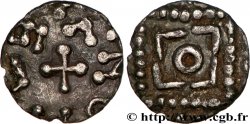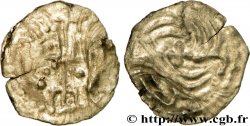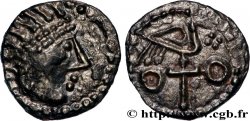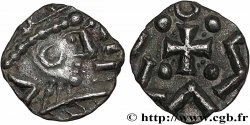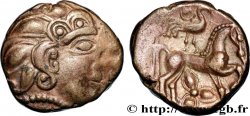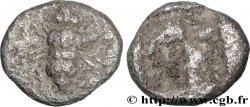Live auction - bmv_709061 - INGHILTERRA - ANGLOSASSONE Sceat au porc-épic et à l’A croiseté
Devi Sign-in ed essere un offerente approvato fare un'offerta, Login per fare offerte. Conti sono soggetti ad approvazione e di approvazione sono raggiunti entro 48 ore. Non aspettare fino al giorno di una vendita si chiude per registrarti.Confermando la tua offerta su questo oggetto ti impegni ad un contratto legalmente vincolante per l'acquisto di questo prodotto e fare clic su «offerta» costituisce accettazione dei termini di utilizzo de live auctions cgb.fr.
Offerta deve essere collocato in euro gli importi interi vendita only.The si chiuderà al momento sulla descrizione dell'oggetto, eventuali offerte pervenute al sito dopo l'orario di chiusura non verranno eseguite. Volte transmition possono variare e le offerte potrebbero essere respinto se si attende per gli ultimi secondi. Per ulteriori informazioni ckeck le FAQ Live auction.
Le offerte vincenti saranno sottomesse ai 18% per spese di compartecipazione alla vendita.
Le offerte vincenti saranno sottomesse ai 18% per spese di compartecipazione alla vendita.
| Valutazione : | 400 € |
| Prezzo : | no offerta |
| Offerta maxima : | no offerta |
| Data di fine vendita : | 25 gennaio 2022 16:32:19 |
Tipo : Sceat au porc-épic et à l’A croiseté
Data: c. 695-740
Nome della officina / città: Atelier indéterminé
Metallo : argento
Diametro : 13,50 mm
Asse di coniazione : 3 h.
Peso : 1,09 g.
Grado di rarità : R3
Commenti sullo stato di conservazione:
Flan large et irrégulier mais bien centré. Patine tachée
N° nelle opere di riferimento :
Diritto
Titolatura diritto : ANÉPIGRAPHE.
Descrittivo diritto : Tête très stylisée à droite, composée d’un croissant vertical et des mèches de cheveux hirsutes en arrière ; une croisette en guise de visage.
Rovescio
Titolatura rovescio : ANÉPIGRAPHE.
Descrittivo rovescio : Grand A croiseté, entre deux croisettes.
Commento
S’il est possible de reconnaitre une extrême simplification de types plus traditionnels au droit, le revers présente un A croiseté. Si le A croiseté est assez largement représenté dans le monnayage mérovingien, il est très rare dans le monnayage anglo-saxon (notons cependant la monnaie W100 reproduite par T. Abramson avec un A croiseté décrit comme un monogramme de Marseille et considéré comme un denier “anglo-merovingien” de la série W).
S’agit-il d’une frappe mérovingienne s’inspirant d’un sceat. Faut-il rappeler que les sceat circulaient largement dans toute la Gaule ? Ou alors s’agit-il d’un sceat reprenant un type de revers typiquement mérovingien ?
Quoi qu’il en soit, ce denier ou sceat semble manquer à toutes les publications sur le sujet.
While it is possible to recognize an extreme simplification of more traditional types on the obverse, the reverse presents a crossed A. While the crossed A is quite widely represented in Merovingian coinage, it is very rare in Anglo-Saxon coinage (note, however, the W100 coin reproduced by T. Abramson with a crossed A described as a monogram of Marseille and considered an “Anglo-Merovingian” denarius from the W series). Is this a Merovingian strike inspired by a sceat? Should we recall that sceat circulated widely throughout Gaul? Or is it a sceat reproducing a typically Merovingian reverse type? In any case, this denarius or sceat seems to be missing from all publications on the subject
S’agit-il d’une frappe mérovingienne s’inspirant d’un sceat. Faut-il rappeler que les sceat circulaient largement dans toute la Gaule ? Ou alors s’agit-il d’un sceat reprenant un type de revers typiquement mérovingien ?
Quoi qu’il en soit, ce denier ou sceat semble manquer à toutes les publications sur le sujet.
While it is possible to recognize an extreme simplification of more traditional types on the obverse, the reverse presents a crossed A. While the crossed A is quite widely represented in Merovingian coinage, it is very rare in Anglo-Saxon coinage (note, however, the W100 coin reproduced by T. Abramson with a crossed A described as a monogram of Marseille and considered an “Anglo-Merovingian” denarius from the W series). Is this a Merovingian strike inspired by a sceat? Should we recall that sceat circulated widely throughout Gaul? Or is it a sceat reproducing a typically Merovingian reverse type? In any case, this denarius or sceat seems to be missing from all publications on the subject







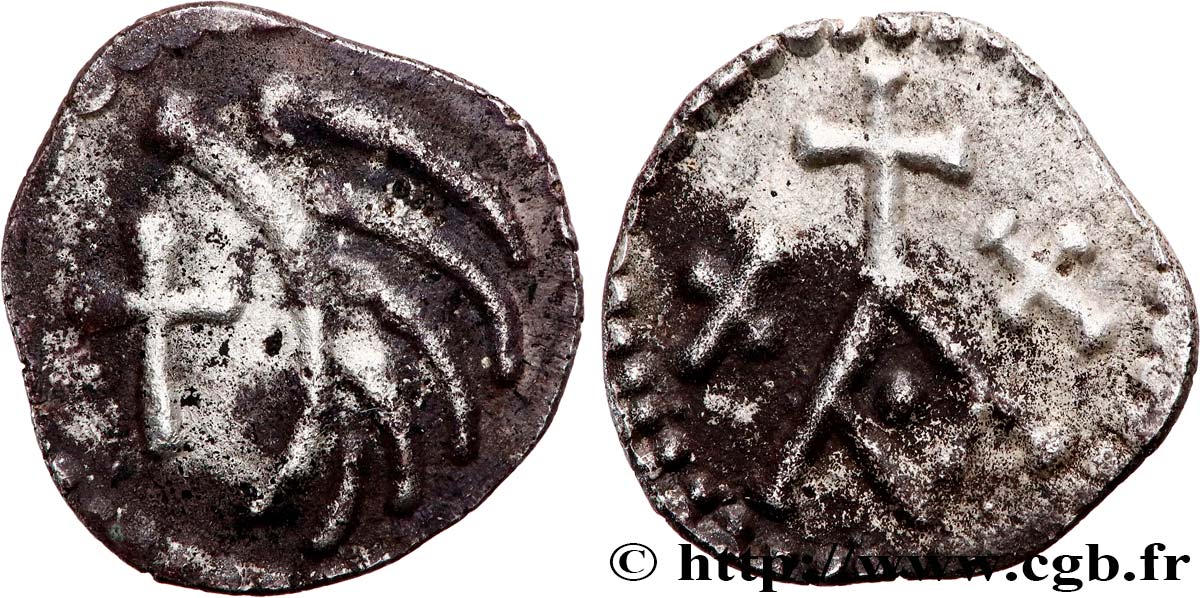
 Segnalare un errore
Segnalare un errore Stampate la pagina
Stampate la pagina Condividi mia selezione
Condividi mia selezione Fai una domanda
Fai una domanda Consegnare / vendere
Consegnare / vendere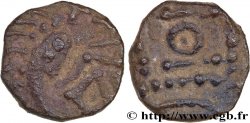
 Descrittivo
Descrittivo